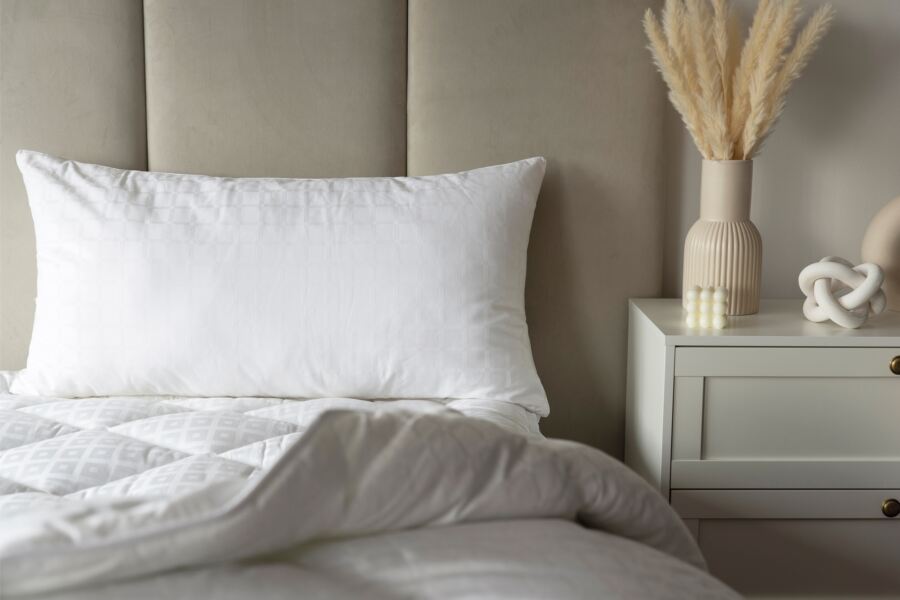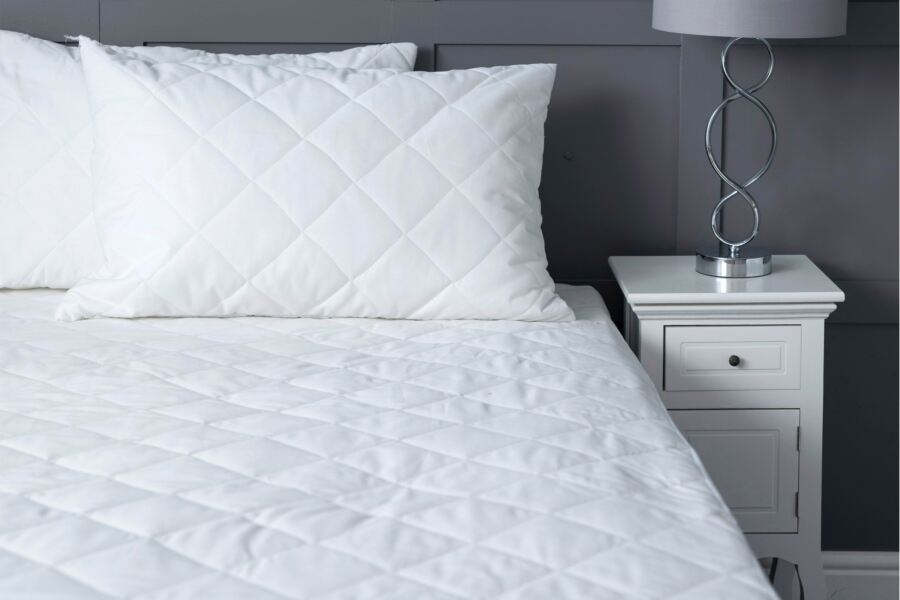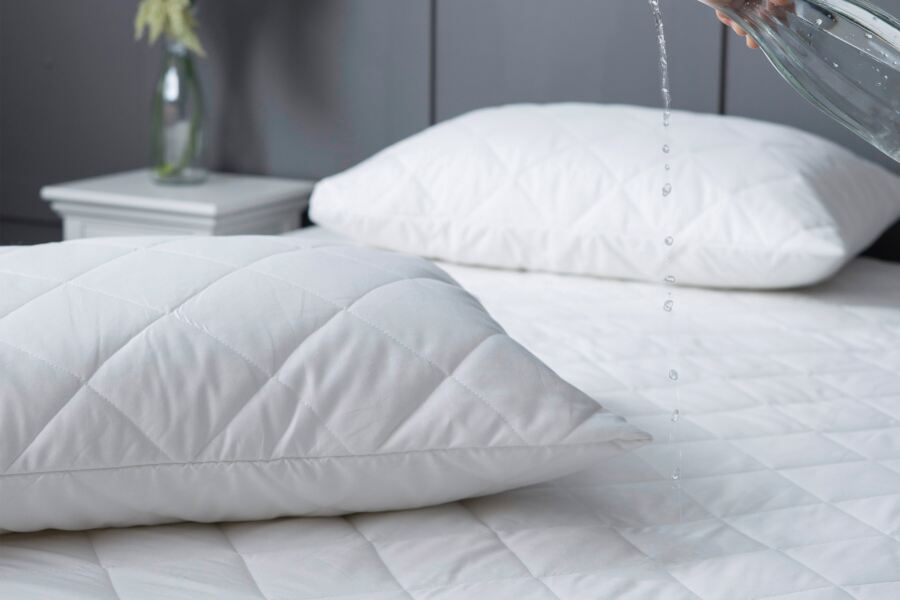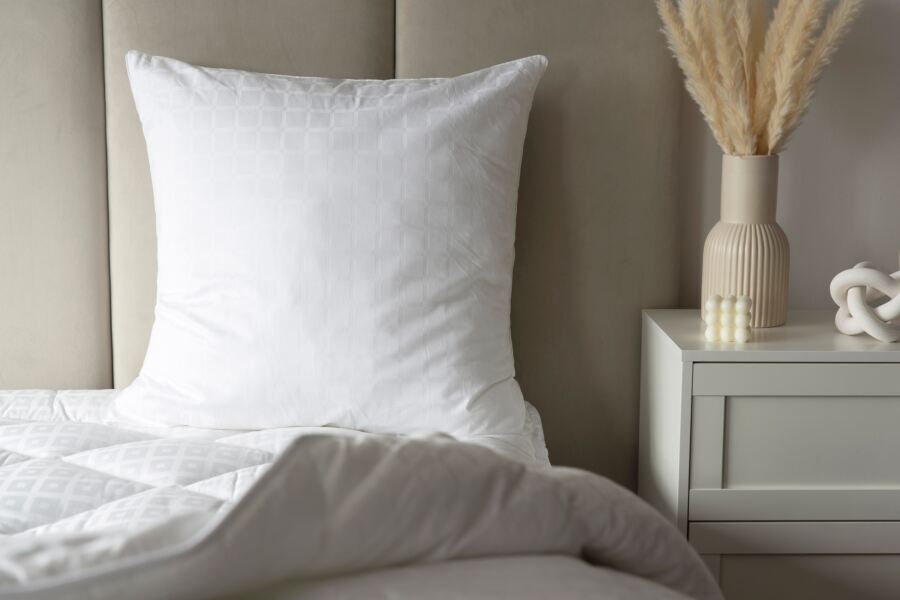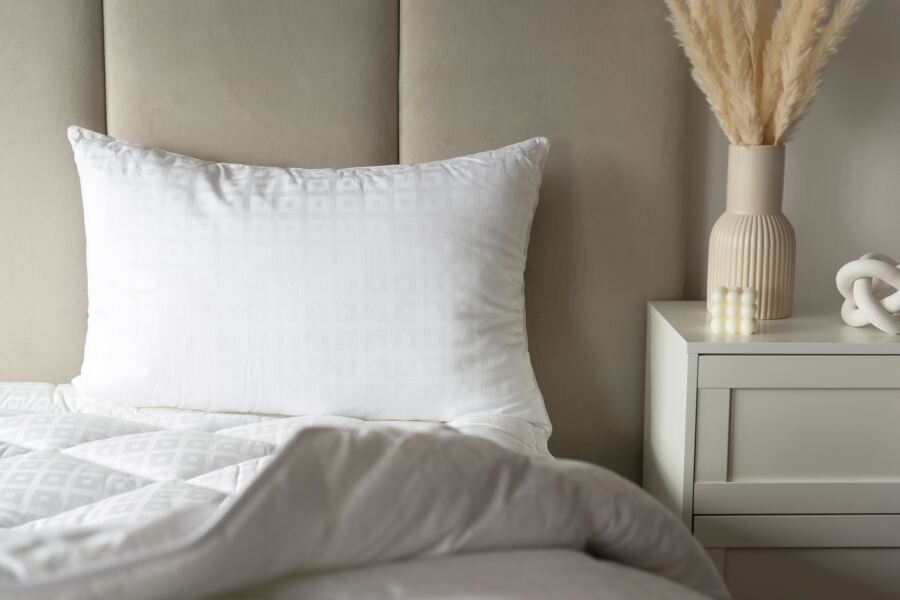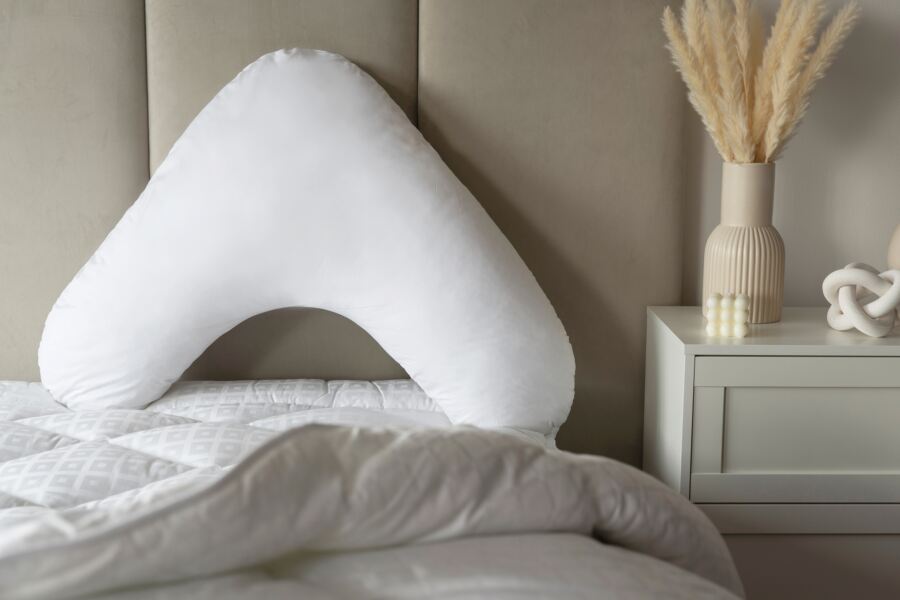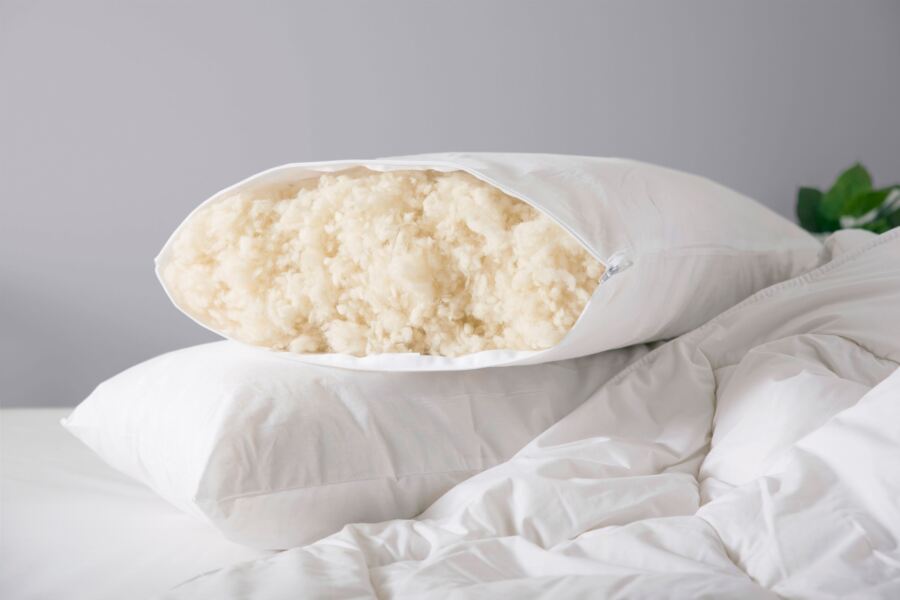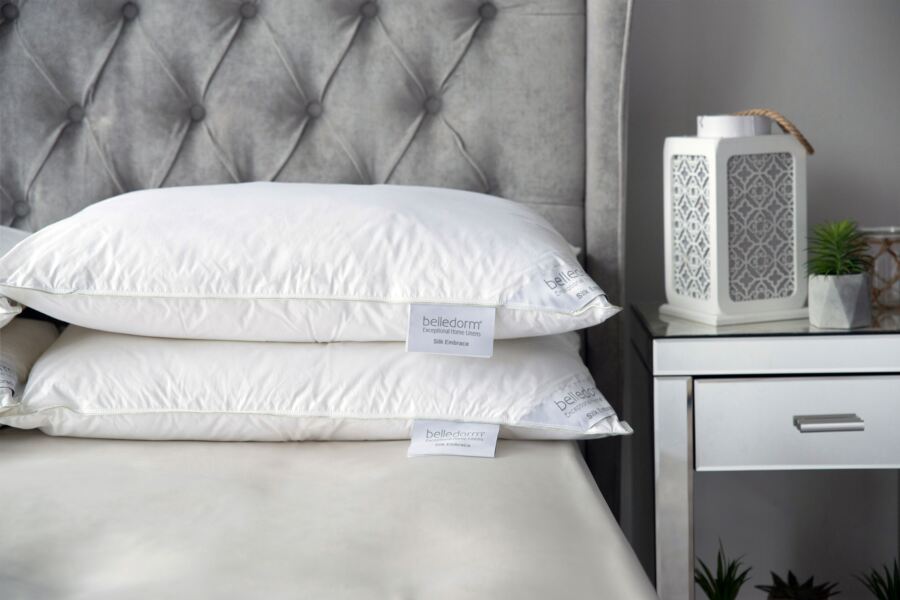Table of Contents
- When Should You Wash Your Pillows?
- How To Wash Pillows: A Guide
- How To Wash Pillows: Pillow Types
- Drying Pillows
- Keeping Your Pillows Clean
- When Should You Replace Pillows?
- More Handy Hints To Keep Your Bed Feeling Heavenly
- Conclusion
Clean pillows are a must if you want to get a great night's sleep. Not only do they feel better and smell so much fresher, but regular washing also helps keep them free of mites, dirt, dust and stains.
They also begin to look bedraggled when they haven't seen warm water for a time, and, in this condition, they aren't exactly going to entice you into bed.
In this article, we'll walk you through exactly how to wash pillows, from memory foam pillows to down pillows, while explaining the importance of doing so, as well as when to know when it's time to replace your pillows and much more!
When Should You Wash Your Pillows?
As we've said, washing pillows regularly has a host of brilliant benefits. While many people will say wash your pillow every six months, it's a better idea to wash them much more frequently than this in order to stop the build-up of germs, sweat, dribble and anything else that likes to lurk in your pillows.
Yeap, we mean dust mites.
If you can, aim to wash your pillows once every three months and more frequently if you don't use a pillow protector.
How To Wash Pillows: A Guide
By far, the easiest way to wash your synthetic pillows is in the washing machine.
Below we will talk you through exactly how to go about this. Be careful, however, as some types of pillows will require a different washing method, which we will go into in more detail in a short while.
-
Place your pillows in the washing machine and opt for a gentle cycle.
-
Don't put too much detergent in the machine; instead, opt for a small amount of mild detergent.
-
Allow the cycle to finish.
-
Air dry or tumble dry your pillows.
It's very important to always read the care label on the pillows you are planning to clean to ensure that they are, in fact, machine washable. Not all pillows will be suitable to place in a washing machine, but there will be instructions on alternative cleaning options for these types.
How To Wash Pillows: Pillow Types
There are many different methods out there to wash pillows, but we have mentioned only the most effective to save time and money.
After all, washing pillows is an easy job, but it's one most people don't find the time to do. While a dry cleaner will do the job, it's costly and won't clean them any more thoroughly than what you could do at home.
For those pillows that require special cleaning, we have outlined their requirements below.
Down pillows
Down pillows can be placed in the washing machine but ensure that they are kept on a gentle cycle. Once they have been washed, make sure they are run through an extra spin cycle as feathers can hold on to a lot of water.
Buckwheat hulls
Buckwheat hulls cannot go through a wash cycle. The hulls will need to be removed from the pillow and added to a basin alongside some cold water - which is used to avoid the hulls shrinking - and a very mild detergent.
Polyester
Use only a small amount of detergent and add it to your washing machine. Place the polyester pillows into the washing machine and put on a gentle cycle only.
Memory foam
Memory foam pillows are only permitted to be washed by hand and should always be air-dried. Using lukewarm (not hot) water and a little detergent, wash memory foam pillows in a basin and leave to steep for around 30 minutes. After this time has passed, squeeze the memory foam and rinse off any residue from the washing detergent. Allow foam pillows to air dry.
Drying Pillows
It's important that, once you wash pillows, they are given an adequate amount of time to dry completely; otherwise, they will begin to sag and lose their shape.
There are some pillows that you can choose to tumble dry but many fare better when left to dry naturally. If you are lucky enough to get a good drying day, pop your pillows outside in the sun and flip them after a couple of hours to ensure completely dry pillows.
It's also a good idea to leave the pillows for slightly longer to air dry than you otherwise might; this is because it can be difficult to tell if they have dried in the middle.
If you are a fan of feather pillows, opt to use a tumble drier on a cool setting. Dryer balls or even tennis balls are a great way to bring up any clumps inside the pillows as a result of washing.
Keeping Your Pillows Clean
It can be difficult to keep pillows clean, especially if you have a busy home, little time, or children or pets.
However, there are some things you can do to keep your pillows looking and smelling fresh if you don't have the time to wash pillows as often as you would like:
-
Allowing your pillows time to air in a well-ventilated room or outside for an hour or two will help you get rid of mites that love to live in your pillows and bed.
-
Any nasty smells can be minimised or completely removed by sprinkling baking soda over the pillows and then vacuuming it off after around 30 minutes.
-
Always allow your pillow to dry out before putting a protector or pillowcase on it. If you don't, there is a risk that mould could begin to grow.
-
Check the washing guide on each pillow label before you wash them.
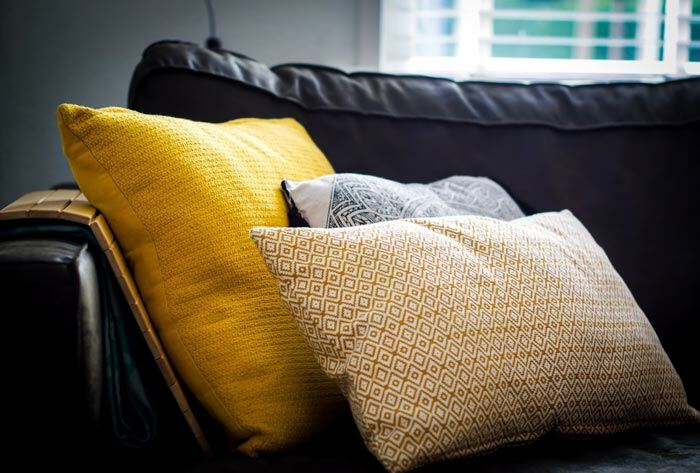
When Should You Replace Pillows?
Generally speaking, if your pillows are older than two years old, it's time to replace them. Pillows should only be used for up to this time because once they hit this milestone, they begin to lose their shape and won't be able to support your head and neck in the right way to help keep your spine aligned.
Furthermore, as a pillow ages, it becomes a very attractive location for moisture and dirt to build up; if left long enough, these can turn into mould.
However, if you notice any of the reasons below and your pillows have not yet reached two years old, you should throw out your old pillows and invest in some new ones sooner rather than later.
Skins problems
If your pillow is infested with oils from your skin, dead skin, dust and possibly germs, it's not going to do your skin any favours. If you notice that you have started to develop acne or other problems with your skin, it could be a sign that your old pillows need to go.
Stiffness/soreness
Pillows play a very important part in keeping your spine aligned. When your pillows are past their prime, they can begin to lose their firmness as they dip and sag. Obviously, they won't give your body all the required support it should be getting.
So, if you wake up with aches and pains you haven't noticed before, it's a good idea to purchase new, quality pillows to see if they rectify the discomfort.
Allergies
Pillows are the perfect breeding ground for allergies; they make the ideal home for viruses, germs, pollen, dust and many other types of unpleasantry. If you find that your allergies are worse than usual, or you think you might be developing an allergy, a change in pillows could be the answer you are looking for.
Night sweats
Did you know that your head will release more heat than any other part of your body? If you sleep hot, you might find that you get head sweats during the night. These are not only extremely bothersome but they can also be made worse depending on what type of pillow you have.
There are many great pillows on the market for those who suffer from night sweats. Look for heat-regulating and breathable pillows which will help you sweat less and therefore get a better night's sleep.
More Handy Hints To Keep Your Bed Feeling Heavenly
Having clean pillows is just one way in which you can keep your bed as tempting as ever. There's nothing quite as good as jumping into a fresh bed after the end of a long day, so let's look at a few other handy hints and tips to keep your bed in tip-top condition.
Wash covers fortnightly
It's not just your pillows that require regular washing - also aim to clean your duvet covers and pillowcases often.
You should be changing these and washing the old ones at least twice a month, but it's ideal that you get into the habit of changing your bedding every week. It's a boring task, we know, but it's definitely worth it if you want optimum comfort and cleanliness.
A great option is to allow your duvet and pillows to air in order to reduce the threat of germs and mites. Try to leave a window open as this will help with the distribution of air and allow the process to take less time - an hour or two is good, but overnight is better.
Don't forget your comforter
If you use a comforter, you should make sure that this is cleaned as per the manufacturer's instructions. While these don't need to be washed as often as pillowcases and duvet covers, they should be cleaned every couple of months to keep them in the best condition possible.
Try protectors
Mattress and pillow protectors can go a long way in helping to keep your pillows in good shape and free from mites. Many of these protectors can even increase the lifespan of both your pillows and your duvet. These protectors will need to be washed at least once a month.
Remember your mattress
Lastly, it's important not to forget your mattress when it comes to keeping your bed clean and at its very best, yet it's something that not many people think about.
It can be daunting to consider how you should go about cleaning a mattress but, thankfully, the process is relatively easy to carry out.
Firstly, you should use a vacuum to pick up any bits of dust, crumbs and, yes, dead skin. You can then use a fabric cleaner to go over the bed and then allow it to dry. While this only needs to be carried out two or three times a year, you should always spot-check the mattress in between changing the bed sheets and clean it as necessary.

Conclusion
We hope our guide on how to wash pillows has been helpful in allowing you to see how important it is to keep your pillows clean, as well as highlighting the different methods of washing different types of pillows. As we have heard, the washing machine isn't always a pillow's best friend!
While it might not be your favourite job in the world, it's extremely important to keep your pillows - and the rest of your bed - clean and hygienic. Not only will this help eliminate allergens and dust mites, but it will also go a long way to ensuring you get a great night's sleep.
Just remember - not all pillows can be washed in a washing machine, so it's a really good idea to check the labelling before you pop them in the wash.
And, if your pillows are old, don't consider trying to revive them past their shelf life. If they are beyond help, investing in some new ones can help reduce skin problems, aches and pains and even allergies.
Happy Slumbers!





